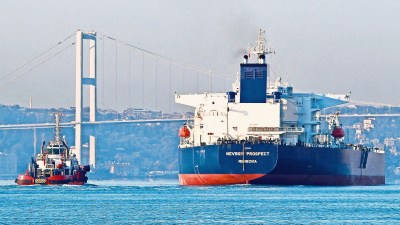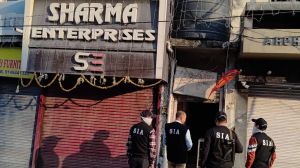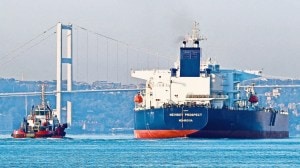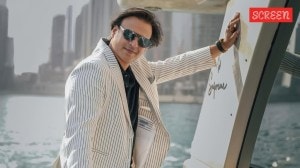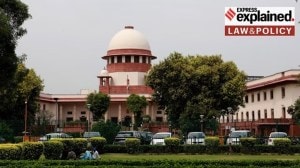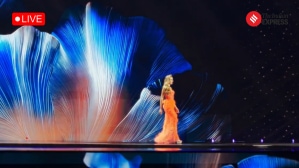What is the Kremlin?
Situated in the heart of Moscow, the Kremlin is much more than just the workplace and official residence of the Russian President. It is a historic site containing the relics of Russia’s czarist and communist past, and today serves as one of Moscow’s busiest tourist destinations.
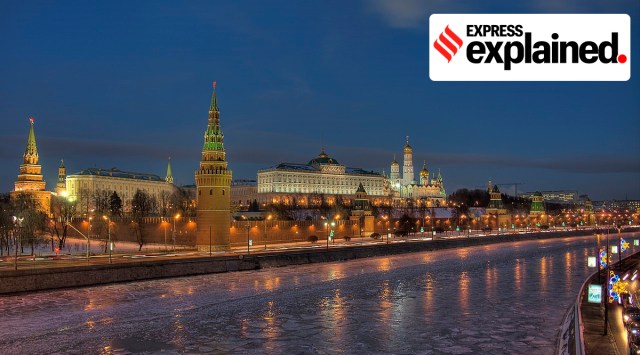 The Kremlin, standing on the banks of the Moskva river. (Wikimedia Commons)
The Kremlin, standing on the banks of the Moskva river. (Wikimedia Commons) On Wednesday (May 3), Russia accused Ukraine of attacking the Kremlin with drones overnight in a failed attempt to kill President Vladimir Putin. Unverified videos on the Internet showed a flying object exploding in an intense burst of light near the dome of the Kremlin Senate building during the alleged Ukrainian drone attack.
But what is the Kremlin?
The word literally means “fortress inside a city”, and there are over 20 kremlins across Russia. However, the most important and popular one is in Moscow, metonymically used to refer to Russian political authority, and has been the seat of political power in Russia since the 14th century (with a hiatus between 1713 and 1918 when the czar shifted the capital to St Petersburg).
Situated on the northern bank of the Moskva river, the 28-hectare Kremlin is roughly the size of New Delhi’s iconic shopping plaza of Connaught Place. It comprises five palaces and four cathedrals, and is enclosed within the Kremlin Wall with its distinctive towers. To the east of the Kremlin are the iconic St Basil’s Cathedral and Red Square, where major state functions take place.
 A bird’s eye view of the Kremlin from 1987. (Wikimedia Commons)
A bird’s eye view of the Kremlin from 1987. (Wikimedia Commons)
The Kremlin has been a UNESCO World Heritage Site since 1990.
Built and rebuilt over centuries
The first fortifications were undertaken at the site in 1156. These were wooden fortifications for what was then a minor trading town. In 1238, during the Mongol-Tatar invasion, the nascent city was completely destroyed. Fortifications would be rebuilt in the 14th century, but the new oak walls soon succumbed to a major fire.
Finally, under Dmitri Donskoy, who reigned as the Grand Prince of Moscow from 1359 to 1389, the oak walls were replaced with white limestone — the present day walls roughly stand on the foundations of Donskoy’s walls.
The project was undertaken between 1366 and 1368; this was also the time when the centralised Russian state was emerging out of Moscow. The Kremlin’s subsequent development and increasing grandeur would reflect the rise of Moscow as the seat of power in Russia.
Construction in the Kremlin would reach a peak after the fall of Constantinople in 1453, when the capital of the Byzantine Empire passed into the hands of the Ottoman Turks. Czar Ivan III, after marrying the niece of the last Christian king of Byzantine, Constantine XI, took upon himself the mantle of making Moscow the centre of the Orthodox world.
Ivan III, who was the Grand Prince of Moscow from 1462 to 1505, undertook an ambitious plan to rebuild the Kremlin, giving it much of the grandeur that we see today. He invited a number of skilled architects from Renaissance Italy, who built the current Kremlin wall and its towers (1485-95) and the Palace of Facets (1487-91).
Ivan’s reign also saw the construction of the Kremlin’s three extant cathedrals: The Cathedral of the Assumption (1475-79), the Cathedral of the Annunciation (1484-89, rebuilt after a fire in 1562-64), and St. Michael’s Cathedral (1505-08).
Each of these buildings is adorned with ornate frescos and Renaissance artwork, and stand around what is known today as the cathedral square. The highest building of the city and Muscovite Russia was the Ivan the Great Bell Tower, built in 1505–08 and augmented to its present height in 1600.
The Kremlin saw its next spurt of building in the 17th century, when the Terem Palace (1635-36), Amusement Palace (1652), and the palace of Patriarch Nikon were built.
However, the Kremlin would fall into disrepair after Czar Peter I, known as Peter the Great, moved the capital to the Baltic Sea port of St Petersburg in 1713.
It was not until 1773 when Empress Catherine II (Catherine the Great) would commission repairs and new buildings at the site. Some older churches and palaces were demolished to build the spacious and luxurious Offices of the Senate (which were reportedly attacked on Wednesday).
The Kremlin would need significant restoration after Napoleon’s invasion in 1812. After winter and lack of supplies forced the French emperor to retreat, he ordered that the Kremlin be blown up. However, rain had wet the explosives, and his orders could not be carried out fully.
Finally, between 1839 and 1849, some older structures were knocked down once again to build the Grand Kremlin Palace, which today serves as the residence of the Russian President.
The Kremlin underwent further changes after the Soviets took control of Russia and brought the capital back to Moscow. (St Petersburg was renamed Leningrad in 1924, a name that survived for the period of the USSR existed.) They pulled down 28 out of 54 historic buildings in the Kremlin, 17 of them being Cathedrals. In their place, they built a military school, office buildings, and the State Kremlin Palace (1959-61).
A mishmash of buildings, uses
Today, the Kremlin contains structures built at any time between the 15th and the 20th centuries. It is a patchwork of different architectural styles, reflecting not just the aesthetics and technical capabilities of the time, but also the ideological and political bent of the ruling class.
Ivan III’s constructions reflect his desire to make Moscow the centre of the Orthodox world, whereas the Soviets famously replaced the eagles atop the spires with Soviet stars, the official symbol of the communist state.
Adding to the architectural diversity within the Kremlin is the diversity of uses that the buildings today are put to. Contrary to popular belief, the Kremlin does not only house the residence and office of the Russian President. It has been open to tourists since the 1950s. Many of the buildings have been converted into museums, and service has resumed in the extant cathedrals after the collapse of the Soviet Union.
St Michael’s cathedral has the royal crypt, containing the remains of all czars prior to the shift to St Petersburg. On the eastern wall lies the Kremlin Wall Necropolis, formerly the national cemetery of Russia (and the Soviet Union).





- 01
- 02
- 03
- 04
- 05


